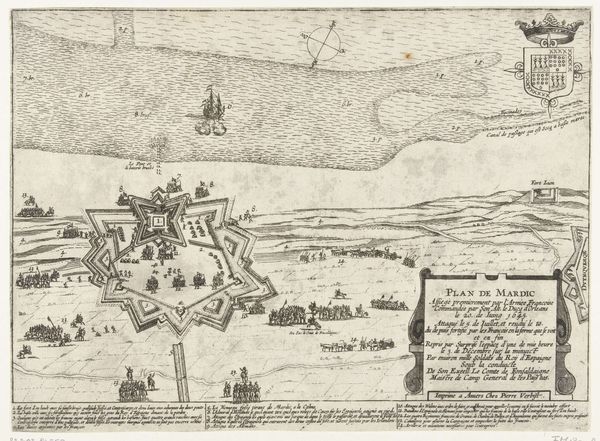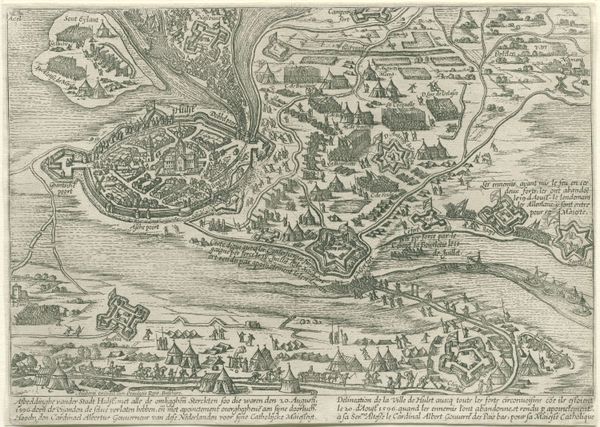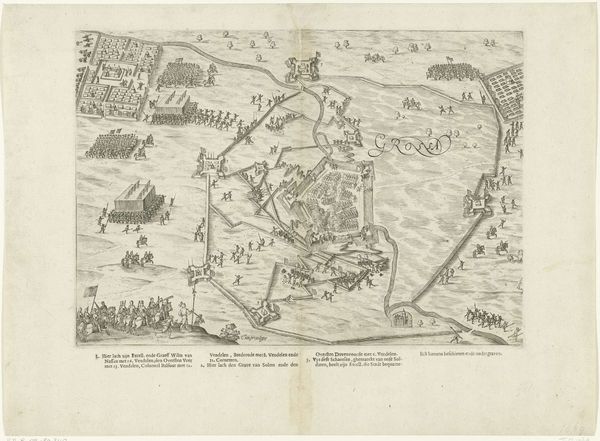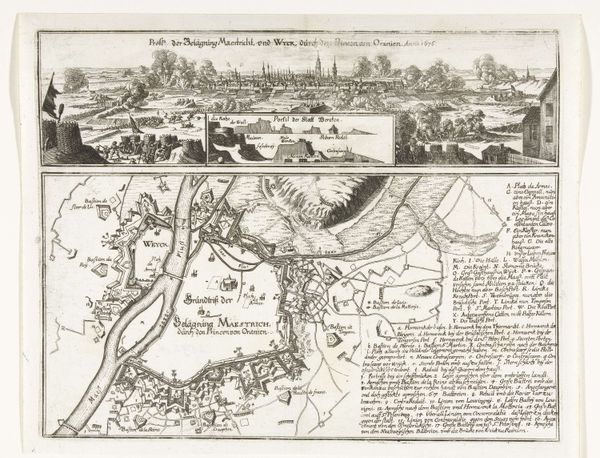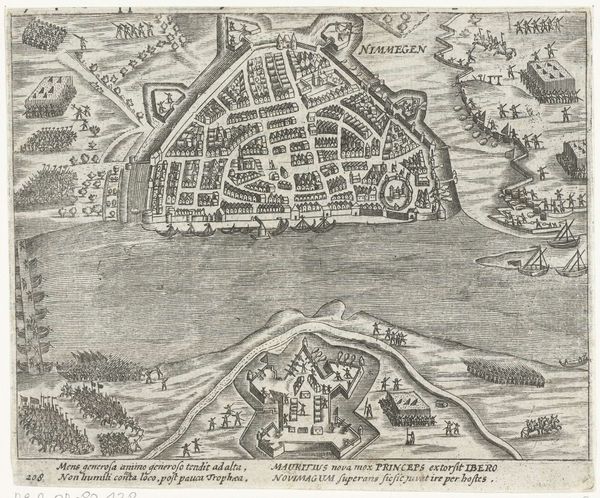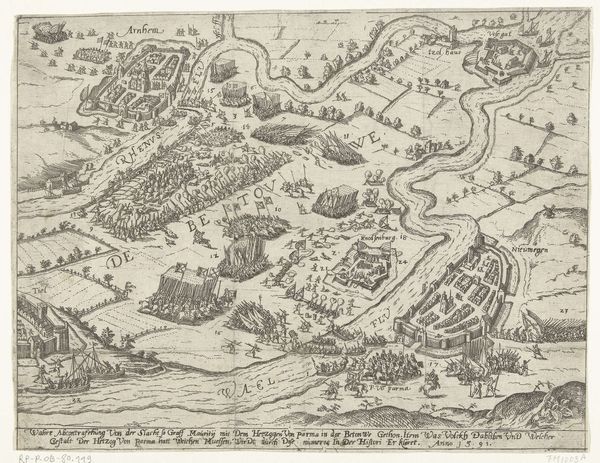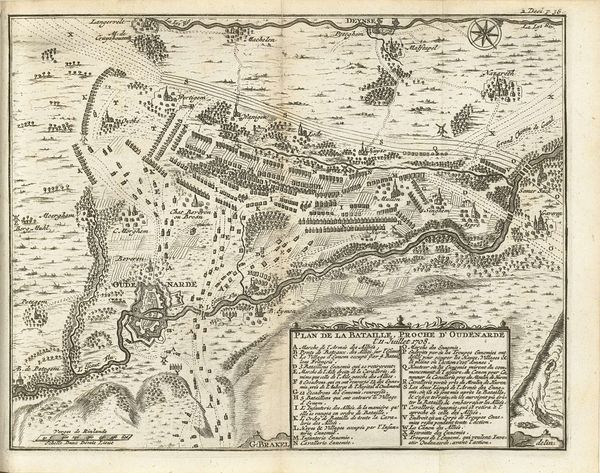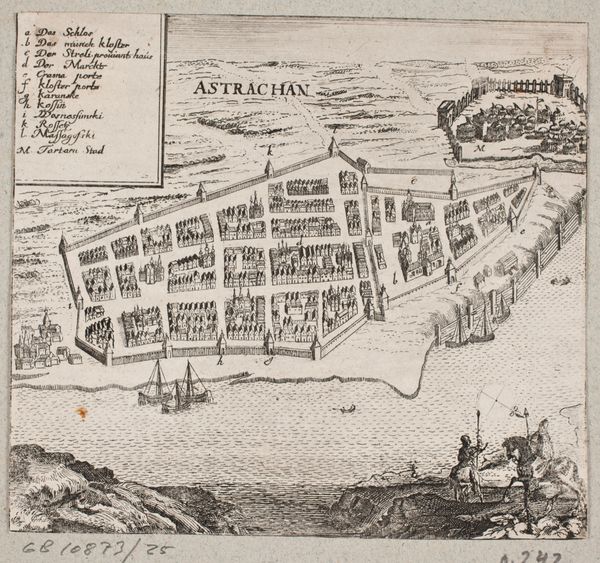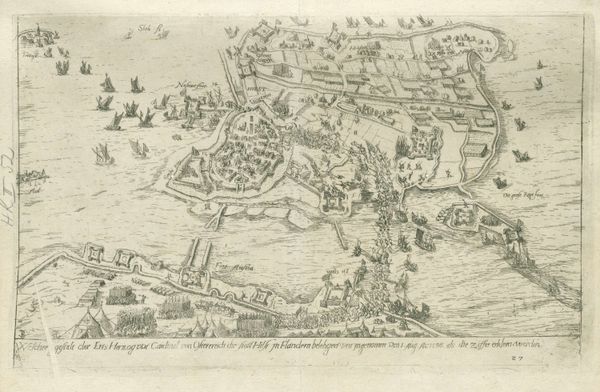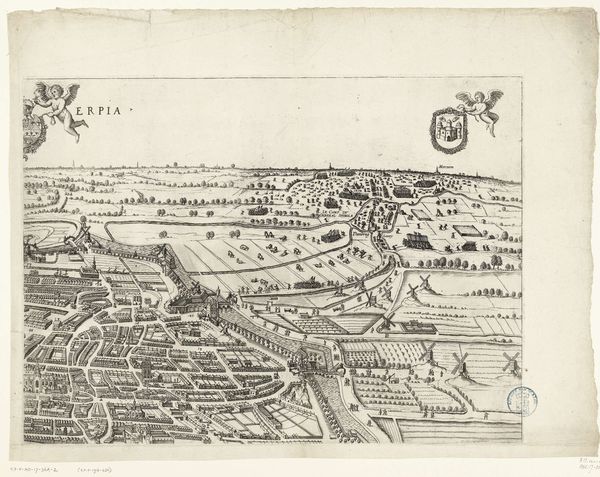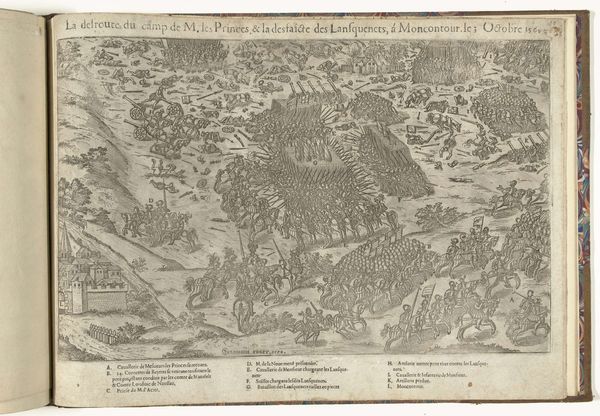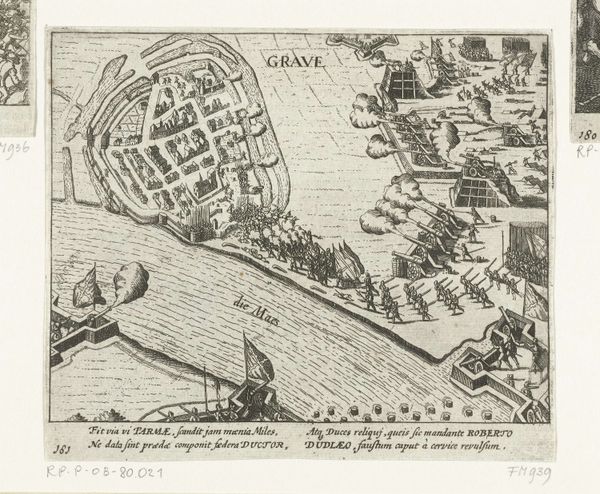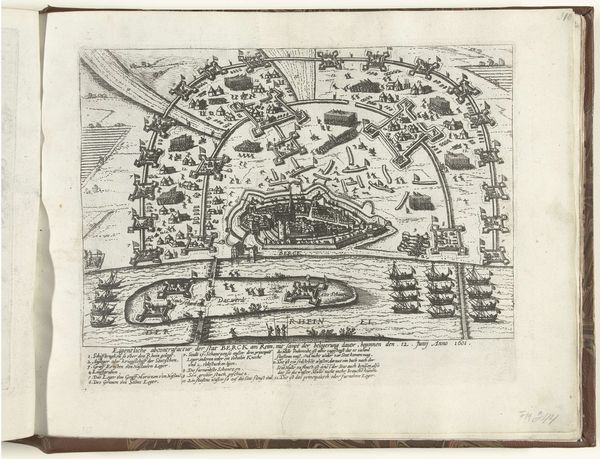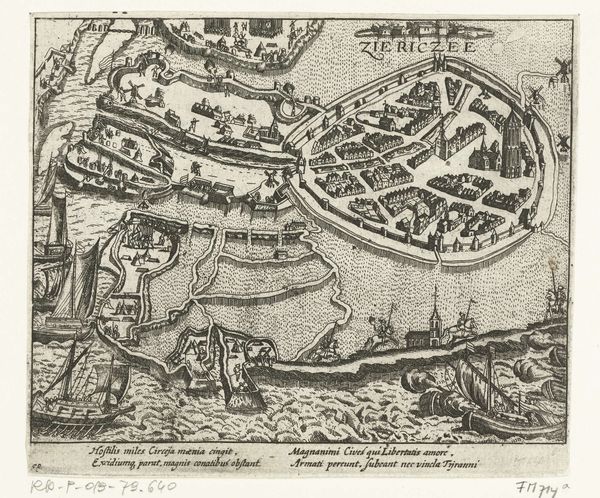
Grote kaart van Antwerpen met de mislukte aanslag in 1605 (blad linksboven) 1569 - 1605
0:00
0:00
pietervanderheyden
Rijksmuseum
print, engraving
#
dutch-golden-age
# print
#
pen sketch
#
old engraving style
#
sketch book
#
landscape
#
personal sketchbook
#
sketchwork
#
pen-ink sketch
#
pen work
#
sketchbook drawing
#
cityscape
#
storyboard and sketchbook work
#
sketchbook art
#
engraving
Dimensions: height 350 mm, width 480 mm
Copyright: Rijks Museum: Open Domain
Curator: So, we have before us "Grote kaart van Antwerpen met de mislukte aanslag in 1605 (blad linksboven)", a print created between 1569 and 1605 by Pieter van der Heyden. Looking at the work, it feels very…precise. A meticulously rendered cityscape. What do you make of this detailed view? Editor: Well, my first thought is about the labour involved. It’s all so finely detailed; one can imagine the hours it took to engrave this plate. What significance does that intensive labour play in our understanding? Curator: Precisely! Consider the historical context. Antwerpen, a vital trading port, relied on such visual representations. These maps were not just aesthetic objects; they were tools of power. Notice how the print emphasizes fortifications and waterways. This isn't just a landscape; it's a resource map, crucial for military strategy and control. The engraving itself reflects that purpose through a network of distribution for tactical intelligence. What does that level of dissemination suggest to you about how art production supported early modern governance? Editor: It suggests that the consumption of art then had significant utility! That its role wasn't just in wealthy homes or galleries, but also war rooms and merchants' offices. The sheer duplication of printed maps implies a society invested in geographic and logistical knowledge. But what about van der Heyden? What was his workshop like? Curator: Good question! Knowing how those engravings were physically created is essential for understanding its value at the time. Did he have apprentices? What tools were utilized? Considering those social elements allows us to analyze further how this work both documents a historic event and represents the material conditions of early modern printmaking. Any closing thoughts? Editor: I never considered how deeply intertwined the creation of art was with governance and warfare. It’s like a totally different form of propaganda. Thanks! Curator: And thanks to you; your perspective highlighted those key social aspects! It shows the true power that this work embodies beyond the merely decorative or representational.
Comments
No comments
Be the first to comment and join the conversation on the ultimate creative platform.
